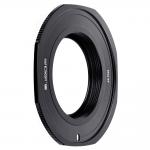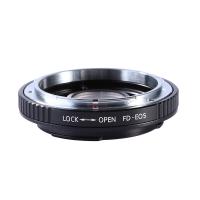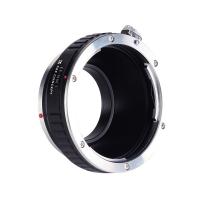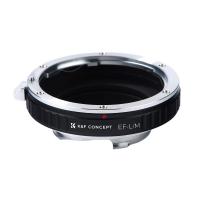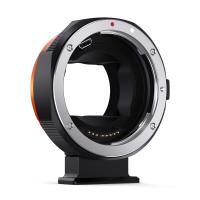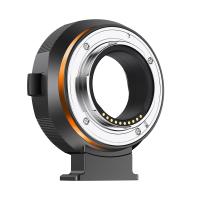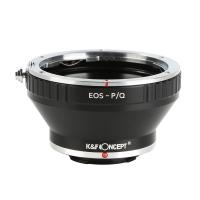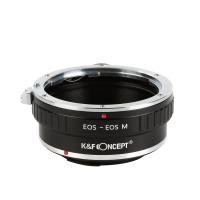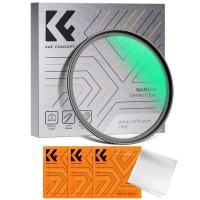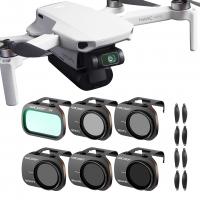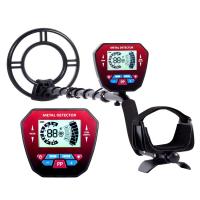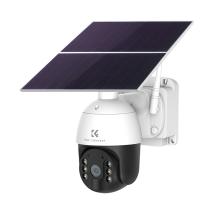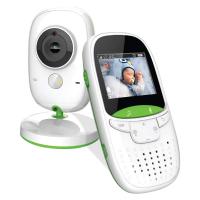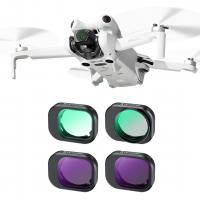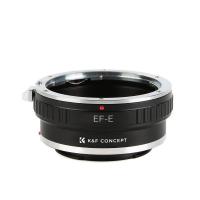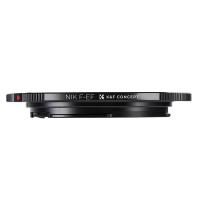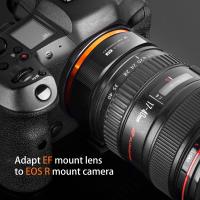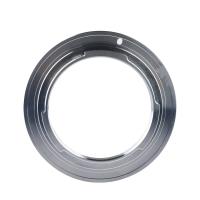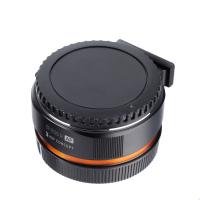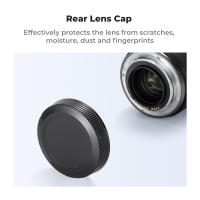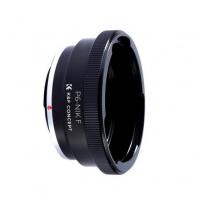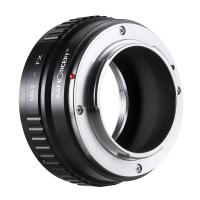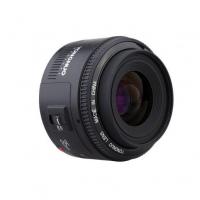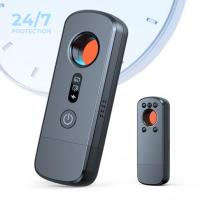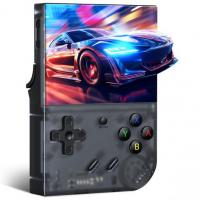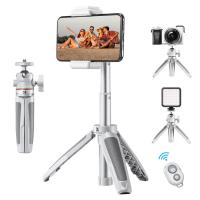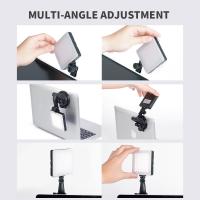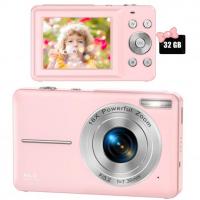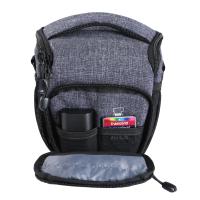Reviews
Great value for money
Version Purchased: Lens Mount Adapter Nikon G (D-Type) Lens to Canon EOS Camera - K&F Concept - adapter ring from Nikon (AI-S, D, G type lenses...) to Canon (Camera Body)
I purchased this adapter two months ago and I can say that I was lucky in my choice because compared to the adapter rings that other friends have, it is clearly of superior quality (since the lens used does not have any play whatsoever, most of the cheap ""Chinese"" adapters, in the range between 15 and 30 euros, have poor quality control, many can be either too hard or even too ""shaky""); Both assembly and disassembly are simple, you just have to be careful and remember to press a small lever before disassembling it. Once mounted, it has a feeling of stability, practically as if a lens had been mounted directly on the camera body.
Given the good quality of my sample, the price of 21.88 euros is absolutely fair.
That said, some recommendations and clarifications:
- a limit of this and similar products is that linked to the information that is not there or is very little (in the absence of a chip, which must be purchased separately, especially in China and the latest generation, programmable, should cost around 20 euros.)
On a Canon body it allowed me to comfortably use Nikon lenses in manual, autom. with aperture priority, with exposure meter operation, and evaluation directly in the live view as well as the exposure and focus.
- Unlike other adapter rings, it also has a lever that allows easy adjustment of the aperture, even if the exact value cannot be established. Even using the reflex as a video camera, shooting videos you have a more fluid control of the aperture, without rotating any ring on the lens that often creates oscillations in the camera.
From the above it can be deduced that to operate correctly it is much better to work in Live-View so as to be able to control exposure and focus.
-Another consideration is the one related to the diaphragm of the lenses: both lenses with an aperture ring (AI, AI-S and D) and lenses without such a ring (G) can be used easily; with most adapter rings with Nikon G you can ""not easily"" work only by blocking the lens diaphragm lever with a small spacer (I use for example a small piece of cardboard, toothpick etc..) of a suitable length depending on the aperture of the diaphragm at which you want to operate, consequently operating in a very empirical way. And therefore every time you want to change the aperture of the diaphragm, without this adapter ring, you have to remove the lens from the camera body.
- I have extensively tested this adapter ring with a Canon 700D body and a quick test on a Canon 70D. The NIKON lenses tested range from an "older" 55mm F2.8 Micro AI-S, up to recent lenses such as 18-105 G, 70-300 VR G. I also tested TAMRON, TOKINA and SAMYANG lenses. Even discovering that the 55mm MICRO and SAMYANG, manual lenses also on Nikon, were easier for me to use on a Canon body thanks to the better functioning of the liveview and the working exposure (not on Nikon D90).
Having said that, I passionately support the use of all types of adapters, which even if at the cost of some sacrifice or limitation, allow us to use sometimes excellent lenses at a very low cost, often with excellent results; and above all they go in the direction of a greater ethics of consumption and use, greatly reducing the economic obsolescence of many products that are still very valid.
The package arrived efficiently protected and the shipping was fast. I thank those who have reviewed this product before me, guiding me towards this choice, and I hope I can also help someone in the guide (often in the dark, given the lack of information) of an adapter ring from Nikon (lenses) to Canon (Camera Body)
I purchased this adapter two months ago and I can say that I was lucky in my choice because compared to the adapter rings that other friends have, it is clearly of superior quality (since the lens used does not have any play whatsoever, most of the cheap ""Chinese"" adapters, in the range between 15 and 30 euros, have poor quality control, many can be either too hard or even too ""shaky""); Both assembly and disassembly are simple, you just have to be careful and remember to press a small lever before disassembling it. Once mounted, it has a feeling of stability, practically as if a lens had been mounted directly on the camera body.
Given the good quality of my sample, the price of 21.88 euros is absolutely fair.
That said, some recommendations and clarifications:
- a limit of this and similar products is that linked to the information that is not there or is very little (in the absence of a chip, which must be purchased separately, especially in China and the latest generation, programmable, should cost around 20 euros.)
On a Canon body it allowed me to comfortably use Nikon lenses in manual, autom. with aperture priority, with exposure meter operation, and evaluation directly in the live view as well as the exposure and focus.
- Unlike other adapter rings, it also has a lever that allows easy adjustment of the aperture, even if the exact value cannot be established. Even using the reflex as a video camera, shooting videos you have a more fluid control of the aperture, without rotating any ring on the lens that often creates oscillations in the camera.
From the above it can be deduced that to operate correctly it is much better to work in Live-View so as to be able to control exposure and focus.
-Another consideration is the one related to the diaphragm of the lenses: both lenses with an aperture ring (AI, AI-S and D) and lenses without such a ring (G) can be used easily; with most adapter rings with Nikon G you can ""not easily"" work only by blocking the lens diaphragm lever with a small spacer (I use for example a small piece of cardboard, toothpick etc..) of a suitable length depending on the aperture of the diaphragm at which you want to operate, consequently operating in a very empirical way. And therefore every time you want to change the aperture of the diaphragm, without this adapter ring, you have to remove the lens from the camera body.
- I have extensively tested this adapter ring with a Canon 700D body and a quick test on a Canon 70D. The NIKON lenses tested range from an "older" 55mm F2.8 Micro AI-S, up to recent lenses such as 18-105 G, 70-300 VR G. I also tested TAMRON, TOKINA and SAMYANG lenses. Even discovering that the 55mm MICRO and SAMYANG, manual lenses also on Nikon, were easier for me to use on a Canon body thanks to the better functioning of the liveview and the working exposure (not on Nikon D90).
Having said that, I passionately support the use of all types of adapters, which even if at the cost of some sacrifice or limitation, allow us to use sometimes excellent lenses at a very low cost, often with excellent results; and above all they go in the direction of a greater ethics of consumption and use, greatly reducing the economic obsolescence of many products that are still very valid.
The package arrived efficiently protected and the shipping was fast. I thank those who have reviewed this product before me, guiding me towards this choice, and I hope I can also help someone in the guide (often in the dark, given the lack of information) of an adapter ring from Nikon (lenses) to Canon (Camera Body)
13/04/2025
Related products
Products You May Like
$162.99 $106.99
Related articles
Blog You May Like

